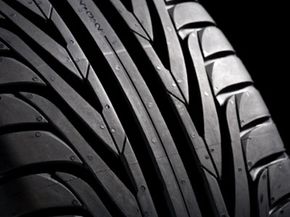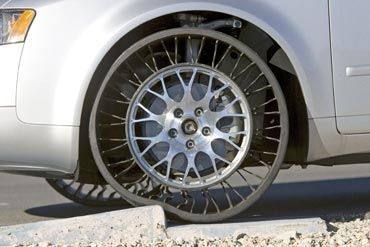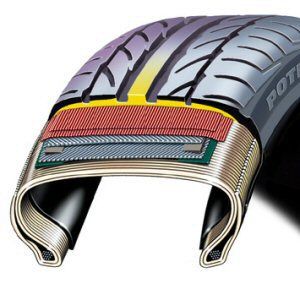In the 2008 movie "Speed Racer," the title character is engaged in a dangerous race across a futuristic desert. A rival driver shreds one of Speed's tires, but he's ready -- he hits a button on his steering wheel and his car, the Mach 5, sprouts a new tire at once.
In real life, we haven't gotten to the point where our cars can instantaneously regenerate tires. But some tire companies have devised ways for the tread to replenish itself after thousands of miles of travel. But how is it possible for the same, worn tire to create new tread?
Advertisement
Most of us don't realize just how important our tires are. Believe it or not, those ugly rubber donuts can make a huge difference in the way your car or truck drives. The right set of tires can even help deliver sports-car handling or superior gas mileage, depending on what you're looking for.
We also don't realize how dangerous tire wear can be. Over time, your tires are subjected to constant pressure, heat, a seemingly endless variety of road surfaces, imperfections in the road -- you name it, chances are your tires have to deal with it. All of these factors cause the tread to wear down. This in turn can reduce your gas mileage, handling and even your vehicle's stopping ability.
This is even more of a vital issue for big commercial trucks -- trucks that often travel several-thousand miles at a time and run on far more than just four tires. Heavy-duty truck tires also have a lot more to do than the tires on a typical passenger car or truck. Of course, the front tires are responsible for steering, but several other sets of tires are responsible for putting the massive diesel engine's power onto the street while at the same time bearing the load of whatever the truck is carrying. As such, commercial truck tires are built to withstand intense rigors, but keeping them in top working condition is very costly for trucking companies.
Good news for them: tire manufacturers have come up with a solution. Several tire makers have introduced tires that regenerate the tread as they wear down, potentially increasing tire life up to 30 percent. That may not seem like a big deal, but when you're a commercial trucking company who has to buy thousands of tires each year, a savings of 30 percent on tires really adds up.
In this article, we'll examine the technology behind self-regenerating tire tread -- and see whether or not the everyday driver will get to use them anytime soon.
Advertisement



